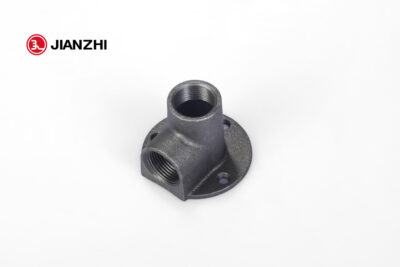Securing wholesale pipe fittings properly is essential to prevent loosening and leaks in plumbing or piping systems.
Here are several steps you can take to ensure a secure and leak-free connection:
- Proper Installation: Ensure that the pipe fittings are installed correctly according to manufacturer specifications and industry best practices. Proper installation involves cleaning and deburring the pipe ends, applying appropriate thread sealant or tape to threaded connections, and tightening the fittings to the recommended torque specifications.
- Use Thread Sealant or Tape: Apply a suitable thread sealant or thread sealing tape to the threaded connections of wholesale pipe fittings before assembly. Thread sealant helps fill the gaps between threads, preventing leaks and providing a secure seal. Make sure to use a sealant compatible with the type of pipe and fittings being used.
- Tighten Fittings Properly: Use a calibrated torque wrench or appropriate tools to tighten the pipe fittings to the recommended torque specifications. Over-tightening can damage fittings or distort threads, while under-tightening can result in leaks. Follow manufacturer guidelines for the correct torque values for different types and sizes of fittings.
- Inspect for Damage or Defects: Before installation, inspect wholesale pipe fittings for any signs of damage, defects, or irregularities that may affect their performance. Look for cracks, dents, or deformities that could compromise the integrity of the fittings. wholesale pipe fittings Replace any damaged fittings before installation to prevent leaks or failures.
- Support Piping System: Provide adequate support for the piping system to prevent stress on the fittings and joints. Use proper hangers, supports, or brackets to secure the pipes and fittings in place and prevent sagging, movement, or vibration. Proper support helps maintain alignment and stability, reducing the risk of leaks.
- Avoid Overloading: Avoid overloading the piping system or subjecting it to excessive pressure or stress. Ensure that the system is designed to handle the anticipated loads and pressures, and avoid exceeding the rated capacity of the fittings. Overloading can lead to fittings loosening, leaks, or failures over time.
- Perform Pressure Testing: After installation, perform a pressure test on the piping system to check for leaks and ensure that all fittings are securely tightened. Pressurize the system to the recommended test pressure and inspect all connections for signs of leakage. Address any leaks promptly by re-tightening fittings or applying additional sealant as needed.
- Monitor for Leaks: Regularly monitor the piping system for any signs of leaks or moisture around the fittings. Pay attention to joint areas, connections, and visible piping runs for any indications of leakage. Promptly investigate and repair any leaks to prevent water damage or other issues.
- Periodic Maintenance: Schedule periodic inspections and maintenance of the piping system to check for loose fittings, corrosion, or other potential problems. Tighten fittings as necessary and replace any worn or damaged components to maintain the integrity of the system.
By following these steps and best practices, you can secure wholesale pipe fittings effectively to prevent loosening and leaks in plumbing or piping systems, ensuring reliable and leak-free operation. Regular inspection, proper installation, and maintenance are key to maintaining the integrity and performance of the piping system over time.
